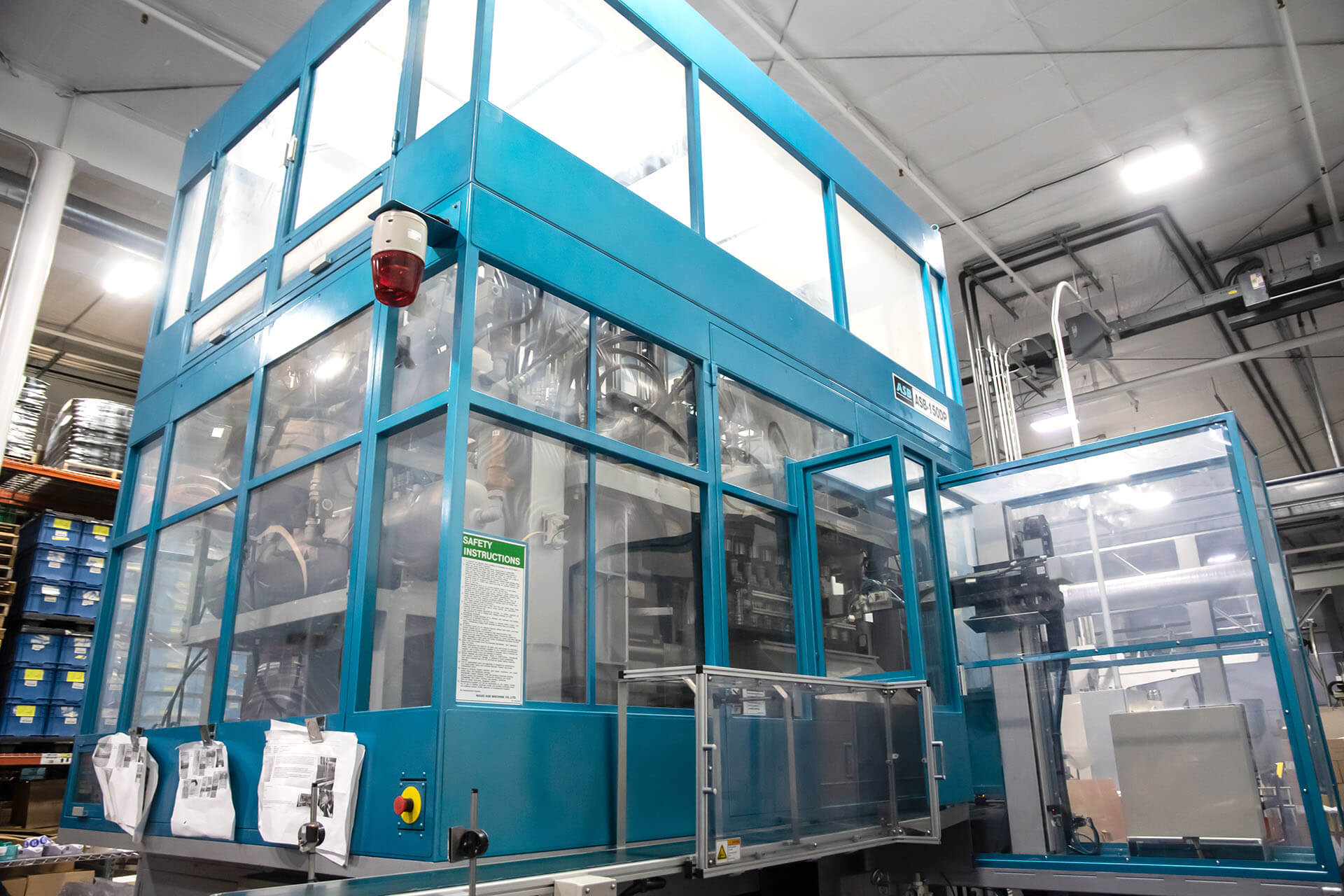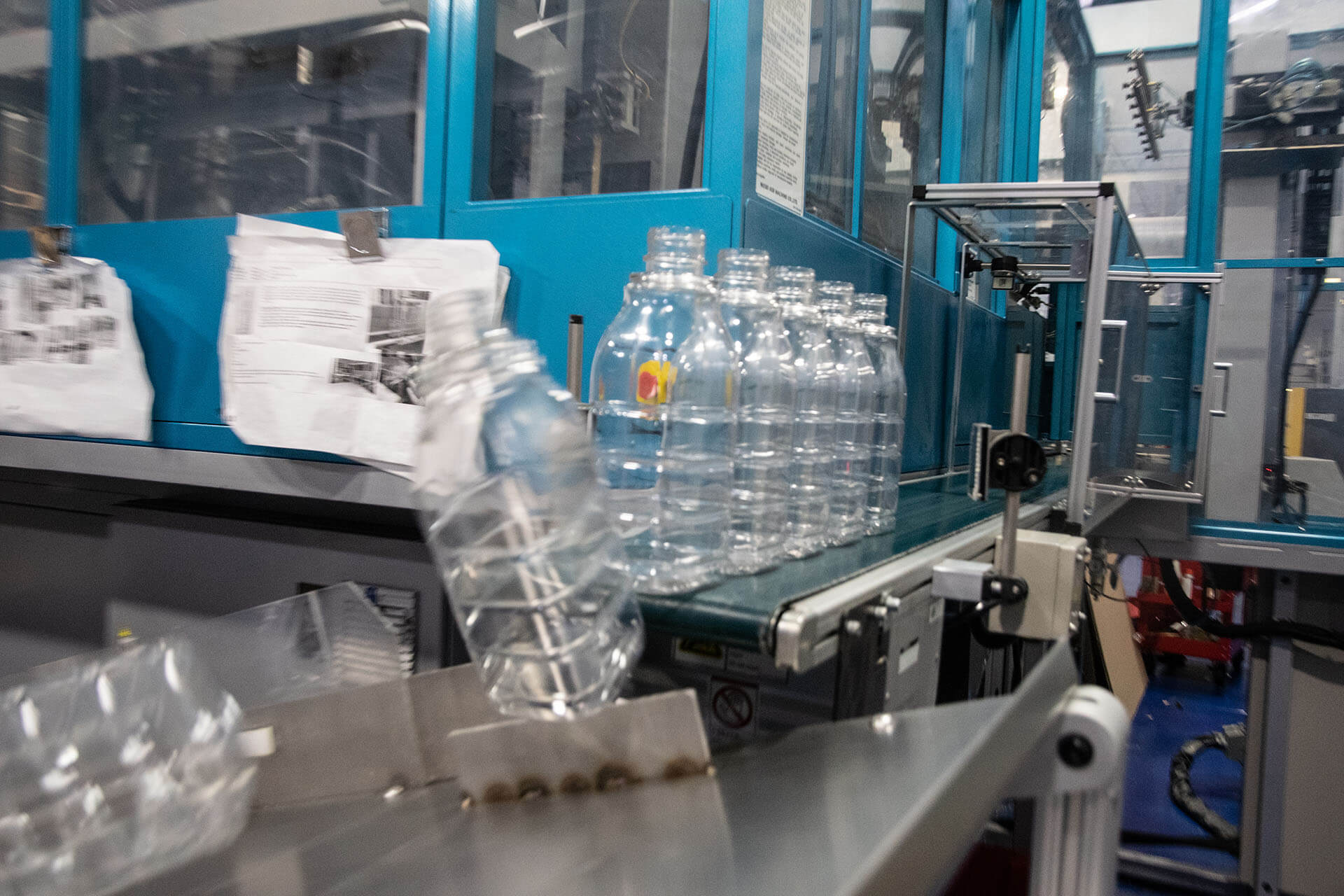Blow Molding
Quality Made Us Global
Injection Molding
Blow Molding Capabilities at Global Plastics


Blow molding is an umbrella term for an industrial manufacturing process to produce a plastic bottle, jar, or other plastic container. Within blow molding, there are a number of different techniques that each require a specific type of molding machine. Understanding these different blow molding techniques and which type we offer at Global Plastics will ensure you get the type of plastic container or packaging that meets your needs. Feel free to contact us with any questions you may have about the plastic bottles, jars, and containers we can produce using our state-of-the-art blow molding process.
The Rise of Blow Molding for Plastic Containers
As an industrial manufacturing process, the idea for blow molding came from glassblowing. When plastic began to gain traction, it was only natural to figure out a way to blow plastic into a hollow workpiece to serve as a container. The first blow molding machine was made back in the late 1930s, which paved the way for the first mass production of plastic bottles right here in America in 1939. But it took a surprisingly long time for it to really catch on. When blow molding did finally catch on, it expanded rapidly, especially in the soda industry. Even as late as 1977 there were zero plastic bottles used for soft drinks. Two decades later the soft drink industry alone was using in excess of ten billion plastic bottles a year. The number of plastic products made by blow molding has continued to increase and shows no signs of slowing down.
Overview of Blow Molding Techniques
There are three different primary blow molding techniques used to produce a plastic bottle, jar, or other type of container. As with injection molding, the tool process creates a mold out of metal (typically steel such as stainless steel for final production runs, and sometimes aluminum).

Injection Stretch Blow Molding (ISBM)
An injection stretch blow molding machine is used to produce the preform piece with the finished neck and polymer tube. The polymer is stretched vertically by the core rod, and then in the blow molding machine is stretched horizontally with compressed air blown into the metal blow mold. The polymer is essentially inflated into the desired shape. This biaxial stretching results in a leak-free bottle, jar, or container. While the single-stage variation of ISBM is best-suited for low-volume production runs, the two-stage variation is good for large-volume production runs with very few restrictions on bottle design. It is one of the most cost-effective methods of mass producing large quantities of plastic bottles.
At Global Plastics, our expertise is injection stretch blow molding (ISBM). Customer clients come to us when they want something different from available stock bottles to meet their specific product packaging needs. In this sense, they are looking for a custom plastic bottle, jar, or other container.
Extrusion Blow Molding (EBM)
Melted plastic is extruded into a parison (a hollow tube) and enclosed in a metal mold. Blowing compressed air into the parison inflates the plastic into the desired hollow shape. EBM is the technique of choice if the bottle or container needs to incorporate a handle, such as plastic milk jugs and plastic watering cans, but is also used for plastic bottles that don’t need handles.
Injection Blow Molding (IBM)
The molten polymer is injection molded with a conventional injection mold, resulting in a preform consisting of an injection molded neck with an attached tube of polymer. The preform will then be moved from the injection molding station to the blow molding station to blow the polymer tube into desired hollow shape of the bottle, jar, or container using pressurized air. The IBM technique is the least used of the three primary blow molding techniques but is especially suited for large production runs of small-capacity medical or single serve plastic bottles without handles that need an injection molded neck for accuracy of threads.
Materials and Applications for Injection Stretch Blow Molding

At Global Plastics, the most common thermoplastic raw material used for our blow molding process is PET or polyethylene terephthalate (the chemical name for polyester, first synthesized in North America in the mid-1940s by DuPont chemists). The properties of PET make it the ideal choice of material for packaging in the food, beverage, and personal care product industries.
PET can be used to create crystal clear transparent plastic bottles when companies want the consumer to be able to clearly see the product inside. PET bottles have very low permeability, which means good protection for product integrity and quality as well as longer shelf life. They are also very tough and durable, which is why they are a good choice for carbonated liquid. PET bottles are also very lightweight (90% lighter than glass bottles of the same size), which means big savings on freight and shipping costs to move your products where they need to go.
While transparency is often a desirable trait in PET bottles, color variations are also possible, such as amber, cobalt blue, and even black with UV protection. Common uses for PET bottles include convenience-sized beverage bottles (water, soft drinks, juices, etc.), spice jars, vitamin bottles, energy shot bottles; bottles and jars for food products such as salad dressings, peanut butter, cooking oils; and personal care bottles for mouthwash, liquid soap, shampoo, and so on.
PET is not the only material Global Plastics can use for injection stretch blow molding. Another choice is PE or Polyethylene, and especially HDPE (high-density polyethylene) which is stronger and more rigid than low-density PE.
Cost Effective Blow Molding with Global Plastics
With decades of experience and expertise in the industrial manufacturing process of both standard injection molding and injection stretch blow molding, Global Plastics can produce the plastic bottle, jar, or container your company needs for its products. Our in-house product development and tooling teams will assist in the design of the plastic container and create the mold for prototyping as well as the final steel mold for production runs. We pride ourselves in working with you as a trusted partner in a mutual collaboration every step of the way to ensure the final product we make meets your needs. We invite you to get in touch with us using the contact us form on our website to discuss your blow molding needs for quality plastic bottles, jars, and containers.